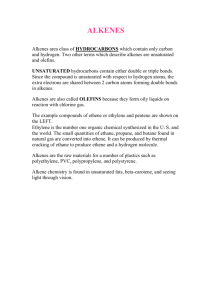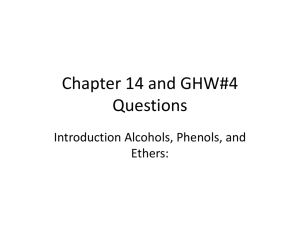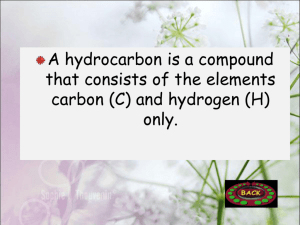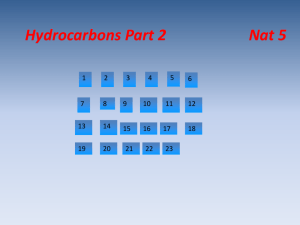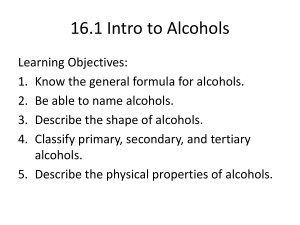the dehydration of alcohols
advertisement
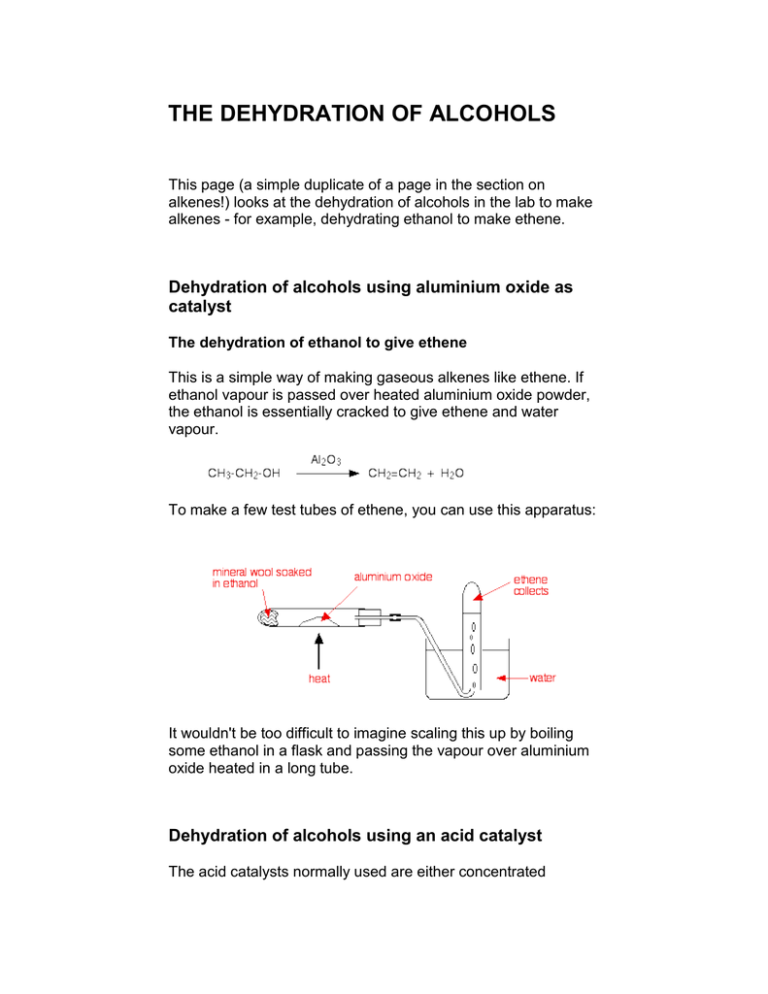
THE DEHYDRATION OF ALCOHOLS This page (a simple duplicate of a page in the section on alkenes!) looks at the dehydration of alcohols in the lab to make alkenes - for example, dehydrating ethanol to make ethene. Dehydration of alcohols using aluminium oxide as catalyst The dehydration of ethanol to give ethene This is a simple way of making gaseous alkenes like ethene. If ethanol vapour is passed over heated aluminium oxide powder, the ethanol is essentially cracked to give ethene and water vapour. To make a few test tubes of ethene, you can use this apparatus: It wouldn't be too difficult to imagine scaling this up by boiling some ethanol in a flask and passing the vapour over aluminium oxide heated in a long tube. Dehydration of alcohols using an acid catalyst The acid catalysts normally used are either concentrated sulphuric acid or concentrated phosphoric(V) acid, H3PO4. Concentrated sulphuric acid produces messy results. Not only is it an acid, but it is also a strong oxidising agent. It oxidises some of the alcohol to carbon dioxide and at the same time is reduced itself to sulphur dioxide. Both of these gases have to be removed from the alkene. It also reacts with the alcohol to produce a mass of carbon. There are other side reactions as well, but these aren't required by any current UK A level (or equivalent) syllabus. The dehydration of ethanol to give ethene Ethanol is heated with an excess of concentrated sulphuric acid at a temperature of 170°C. The gases produced are passed through sodium hydroxide solution to remove the carbon dioxide and sulphur dioxide produced from side reactions. The ethene is collected over water. WARNING! This is potentially an extremely dangerous preparation because of the close proximity of the very hot concentrated sulphuric acid and the sodium hydroxide solution. I knew of one chemistry teacher who put several students into hospital by getting it wrong! That was many years ago before safety was taken quite so seriously as it is now. The concentrated sulphuric acid is a catalyst. Write it over the arrow rather than in the equation. Note: You will find the mechanism for the dehydration of alcohols in the mechanism section of this site. You will also find a discussion of how to cope with questions about the dehydration of more complicated alcohols if you follow a link at the bottom of that page. Use the BACK button (or the HISTORY file or GO menu) on your browser if you want to return to this page. The dehydration of cyclohexanol to give cyclohexene This is a preparation commonly used at this level to illustrate the formation and purification of a liquid product. The fact that the carbon atoms happen to be joined in a ring makes no difference whatever to the chemistry of the reaction. Cyclohexanol is heated with concentrated phosphoric(V) acid and the liquid cyclohexene distils off and can be collected and purified. Phosphoric(V) acid tends to be used in place of sulphuric acid because it is safer and produces a less messy reaction.

